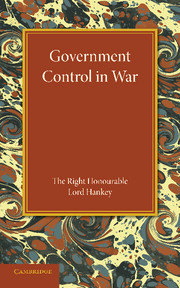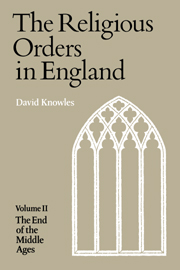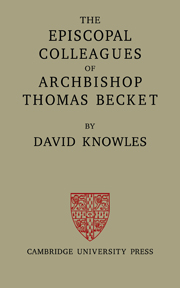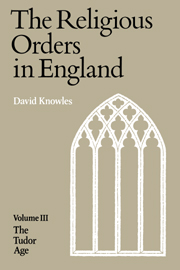Saints and Scholars
$59.99 (C)
- Author: David Knowles, University of Cambridge
- Date Published: January 1966
- availability: Available
- format: Paperback
- isbn: 9780521091725
$
59.99
(C)
Paperback
Looking for an examination copy?
This title is not currently available for examination. However, if you are interested in the title for your course we can consider offering an examination copy. To register your interest please contact [email protected] providing details of the course you are teaching.
-
This collection transports us into the monastic age - the thousand years between the sixth and sixteenth centuries, when the monasteries were the treasure-houses of Europe's social, cultural and religious heritage. The men we encounter are each representative, in differing ways, of their own historical setting and of the strengths and weaknesses of mankind. Professor Knowles portrays outstanding spiritual leaders, such as St Bernard and St Francis; the powerful intellects, the writers and artists, such as St Anselm, Bede and Matthew Paris; some of the noblemen, politicians and magnates; and those, like Gerald of Wales or John Wyclif, who were fierce and not always just critics of the monastic way of life; some lesser figures whose interests were limited to farm administration or country pursuits; and those almost forgotten men who died for their faith under the shadow of the Reformation. Each study is remarkable for its balance, sympathy and understanding; this is a collection by a great scholar who is an artist in words.
Customer reviews
17th Oct 2024 by UName-297823
I like to trust an author, to explore his or her work, and read his or her oeuvre, as much as possible. This tendency has led me to read all the novels of authors Rumer Godden, Elena-Maria Vidal, Sigrid Undset, and investigate the detective novels especially the ones with Harriet Vane, translations, plays, and Christian apologetics of Dorothy L. Sayers. When a new Eamon Duffy work is announced, I sign up for it too, along with his The Stripping of the Altars, The Voices of Morebath, Marking the Hours, and Fires of Faith. Ditto: Aidan Nichols. The same thing goes for musical performers: for years I collected every LP release by Frederica von Stade and then followed up with the CD re-releases and releases: Mozart, Monteverdi, Massenet, Mahler, Ravel, Rossini, Strauss--the composer didnt matter, the artist did. Stile Antico is a new favorite and I watch for their work. I think its the distinctive voices I hear and respond to, written and vocal. Among authors, Dom David Knowles, born Michael Clive Knowles, may be joining that fortunate pantheon. Of course, his books are probably all out of print, so finding copies might be just part of the adventure. Having read Bare Ruined Choirs, his abridged version of the third volume of his series on Monasticism in England and this book, I have his Evolution of Medieval Thought in queue and hope to pick up a copy of another collection of essays from Argosy Bookstore in NYC later this week. This book, Saints and Scholars: Twenty-Five Medieval Portraits is a collection of biographies of monks, friars, and saints in England from the Anglo-Saxon era to the Tudor era--from Bede the Venerable to John Feckenham, the Last Abbot of Westminster. There are 25 portraits in 23 chapters. The word portrait is apt as Knowles surveys the person he is describing and then suddenly focuses on some particular feature. The narration and description flows along and then Knowles stops and shows us what made that person who he was, or otherwise provides some essential understanding of the situation. Of St. John Houghton of the Carthusians of the Charterhouse in London he writes, In . . . John Houghton, the strict monastic life brought to blossom for the last time on English soil a character of the rarest strength and beauty--a last flowering, a winter rose, of English medieval monachism. . . . the picture that emerges is of a man capable not only of inspiring devoted attachment, but of forming in others a calm judgment and a heroic constancy equal to his own. Then Knowles goes on to demonstrate how those members of the Charterhouse who followed St. John to death, either at the gallows or in prison, suffered all with detachment and holiness so inspiring that Henry and Cromwell had to make sure the last of them died in secret agony. In the chapter on William More, the Prior of Worcester, he describes a visit of Princess Mary, the Countess of Salisbury, Margaret Pole, and the Countess sons, including Lord Montague: The imagination rests for a moment on the guest-hall at Worcester that year. England in 1526 must still have been a settled country with the future predictable, when Anne Boleyn and Thomas Cromwell were still in private places, and the sword that was to divide kinsmen so sharply lay still sheathed. Yet the four visitors who sat there with the prior were all to know sorrow, and were all in their fashion to suffer, or to cause suffering, for their faith. The Countess and her elder son were to perish at the hands of the executioner, while the younger son was to die in exile haunted by the disaster that he had helped to cause. They must often have spoken of the absent brother, Reginald, also in part to be the cause of their fate, who was himself to die, a prince of the Church, on the same day as the little girl, his cousin, each of them alone in the new, harsh world which they had hoped to sweeten, but had only the more embittered. Such inimitable style--elegaic and yet realistic Knowles practices such balance in every chapter, as in this description of Bede the Venerable: The quiet monk of Jarrow is also a human being. He is an Englishman, and the first Englishman to declare himself a lover of England not by patriotic phrases, but in his desire to tell how England became Christian and of the cloud of witnesses that had so quickly made this island an island of saints. He was, beyond this, a born presenter of character, a true brother of the poet of Beowulf and of the writers of the great sagas of the North. Half-a-dozen of the best stories in English history come from Bede--the martyrdom of St. Alban, the arrival of St. Augustine, the story of Cuthbert the shepherd boy or the hermit of Farne warmed by the seals, the story of Hilda and the poet Caedmon. And for character also: all that we know of the kings of Mercia and Northumbria, of Wilfred of York, of the abbots Benedict and Coelfrid, and of many others, comes from Bede. If you pick Bedes book up, it is hard to put down. I say the same of this author and this book. Highly recommended--note: the author assumes the reader knows about English and monastic history.
Review was not posted due to profanity
×Product details
- Date Published: January 1966
- format: Paperback
- isbn: 9780521091725
- length: 232 pages
- dimensions: 203 x 126 x 14 mm
- weight: 0.262kg
- availability: Available
Table of Contents
1. The rule of St Benedict
2. Bede the venerable
3. Three monastic founders: Dunstan, Ethelwold and Oswald
4. Lanfranc
5. Anselm of Canterbury
6. Alfred of Rievaulx
7. Gilbert Foliot
8. Two great abbots: Odo of Battle and Samson of Bury
9. Hugh of Lincoln
10. Gerald of Wales
11. Francis of Assisi
12. Thomas of Eccleston
13. Roger Bacon
14. Matthew Paris
15. Henry of Eastry
16. Thomas de la Mare
17. Uthred of Boldon
18. John Wyclif
19. William More, Prior of Worcester.
Sorry, this resource is locked
Please register or sign in to request access. If you are having problems accessing these resources please email [email protected]
Register Sign in» Proceed
You are now leaving the Cambridge University Press website. Your eBook purchase and download will be completed by our partner www.ebooks.com. Please see the permission section of the www.ebooks.com catalogue page for details of the print & copy limits on our eBooks.
Continue ×Are you sure you want to delete your account?
This cannot be undone.
Thank you for your feedback which will help us improve our service.
If you requested a response, we will make sure to get back to you shortly.
×











